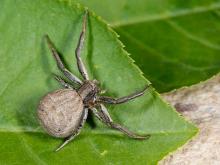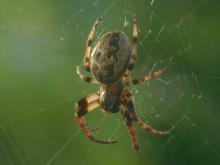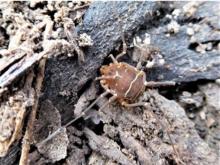Media

Species Types
Scientific Name
Pisaurina spp.
Description
Nursery web spiders build silken tents in plants to protect their egg sacs, then stand guard until the hatchlings are ready to disperse. Large and velvety, nursery web spiders have long legs and variable color patterns.






























